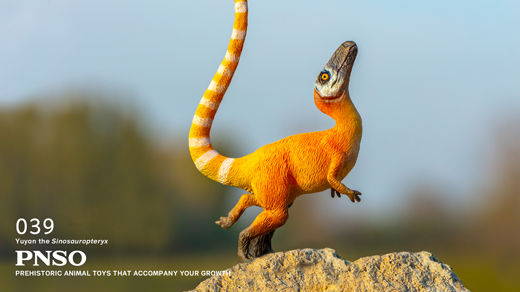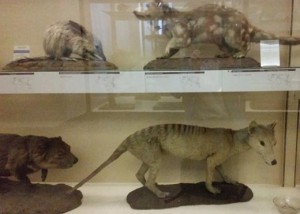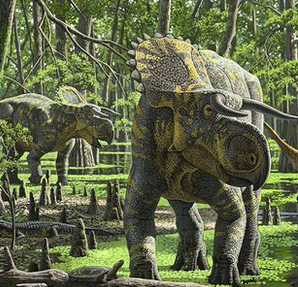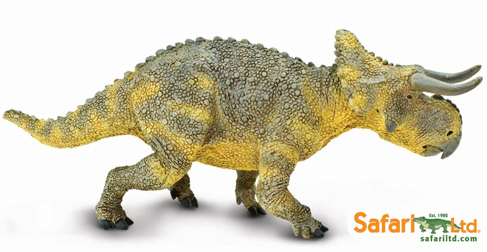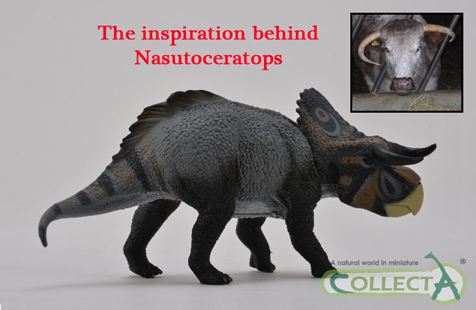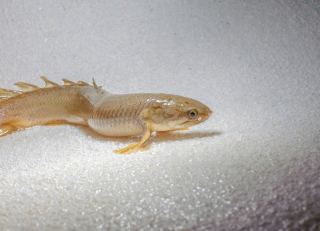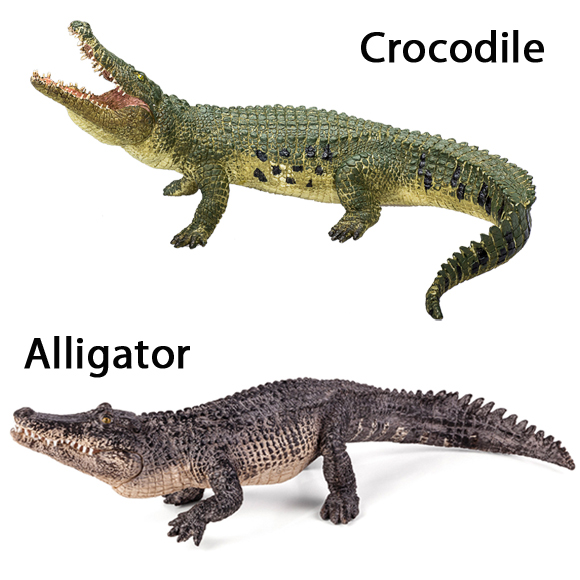News stories and articles that do not necessarily feature extinct animals.
Crocodiles Just Want to Have Fun
Play Behaviour Reported in Crocodilians
Ask someone to name an animal that plays and they are very unlikely to suggest an alligator, however, in a new study conducted by a psychology professor at the University of Tennessee, its seems that crocodiles indulge in play behaviours and they quite enjoy it too. In the first study of its kind, Vladimir Dinets, a research assistant professor at the University’s Department of Psychology, has published a paper in the quarterly academic journal “Animal Behavior and Cognition”, the paper examines the evidence for play behaviour that has been observed in crocodilians (alligators, crocodiles, caimans and the gharials), not creatures that most people would associate with the word “fun”.
Crocodiles and Play
According to the Vladimir, over the ten years or so he has spent studying these reptiles, he has observed lots of play behaviour, including playing in water jets, toying with objects, surfing waves and riding on the backs of other crocodilians. This type of research is important as it helps to shed light on how animals develop and provides an insight into the evolution of intelligence, after all, play and social interactions as a result of play behaviours are more commonly associated with mammals such as primates. To generate more data, Vladimir conducted an informal survey of crocodile and alligator-themed groups on social media and raised the case for fun loving crocodiles at various conferences.
His results show that play behaviour in crocodilians is not uncommon, but it remains very poorly understood and there has been virtually no formal research conducted in this field. Behaviour specialists have identified three basic types of play related to animals and all three types have been observed in various species of these toothy creatures with fearsome reputations. Ironically, the amount of play indulged in by crocodilians may be under reported, reasons for this are that many crocodiles are most active at night when observation is difficult, some observers doubt their own observations, thinking that what they have seen may have a more credible explanation, whilst some witnesses may believe that their claims will not be taken seriously.
Main Types of Play Behaviour
- Locomotor play – defined as intense or sustained movements, often without any apparent reason or stimulus. For example captive, young American alligators repeatedly sliding down chutes into water, a hatchling caiman deliberately propelling itself across a pool using a jet of water flowing from the bottom of its concrete enclosure, or a 2.5 metre long Estuarine crocodile “surfing” waves off a beach in Australia.
- Social play – defined as a pair of crocodiles (or more), indulging in play together, examples given included a pair of Cuban crocodiles in captivity with the male giving “piggyback rides” around the pool, the female being carried on the back of the male as he swam around. Two young Black caimans chasing each other around in circles and reference to a “short sequence of film of two sibling Nile crocodiles tussling with each other in what looked like play behaviour” – a reference to personal communications between Vladimir Dinets and Dr Darren Naish (Honorary Research Fellow at the School of Earth & Environmental Sciences, University of Portsmouth).
- Play with objects – defined as playing with toys, interacting with various objects. This is the most common form of play observed by zookeepers and staff responsible for looking after these reptiles in captivity. Indeed, many zoos now toss in various objects such as robust floats and balls to provide a stimulus.
There has even been cases of interspecific play behaviour reported. Vladimir cites the example of an American alligator interacting with a river otter (Big Cypress National Preserve, Florida).
It seems there may be a softer more playful side to these creatures, after all, as far as we at Everything Dinosaur are aware only about eight species are proven man-eaters.
A Strong Bond with Humans
There is also some evidence to suggest that crocodilians can form a strong bond with humans. Back in 2011, Everything Dinosaur wrote a brief article about two Dwarf caimans from the Blue Planet Aquarium in Cheshire that seemed to respond to their pet names, coming when called.
To read more about this: Crocodilians Respond to Their Own Names.
However, there are a number of documented cases of crocodiles and people becoming playmates. In the published paper, the story of an American crocodile called Pocho and its relationship with Gilberto “Chito” Shedden is recounted. “Chito” rescued the crocodile and became its keeper, the crocodile was soon tamed and so strong was the bond between them that “Chito” would often swim with the crocodile.
Various play behaviours were observed, including the crocodile indulging in mock charges, it sneaking up behind “Chito” as if to try to startle him and in return the reptile accepted being caressed, hugged, rotated in the water and kissed on the snout. This unique relationship continued for twenty years, until Pocho apparently died of old age. The two became celebrities in their native Costa Rica and were even the subject of a documentary made by Roger Horix “The Man Who Swims With Crocodiles”.
Play Behaviour in Crocodilians
Dinets’ study builds on previous work undertaken by colleague Professor Gordon Burghardt (Department of Psychology and the Department of Ecology and Evolutionary Biology). It was Professor Burghardt who defined the concept of “play” in a way that allows it to be recognised in species not previously seen as playful or capable of play-like behaviours. This new study supports the hypothesis that play behaviours are almost universal in “intelligent” animals, those capable of complex, flexible behaviour. The research can help scientists to further explore the link between the evolution of more complex behaviour and even intelligence through playful activity.
Vladimir stated:
“Hundreds of thousands of crocodilians are now kept in captivity in zoos, commercial farms and breeding centres set up for endangered species. Providing them with toys and other opportunities for play makes them happier and healthier.”
Did Dinosaurs Play Too?
This leads on to the question that if play is observed in animals such as crocodilians and we know that birds indulge in play too, then this has consequences for the Dinosauria. It may be very difficult to prove given the limitations of the fossil record when it comes to preserving behaviour, but it can be speculated or even asserted that dinosaurs played as well. Cavorting camarasaurs, or ticklish tyrannosaurs, now that’s a thought…
For dinosaur models, games and toys: Everything Dinosaur.


